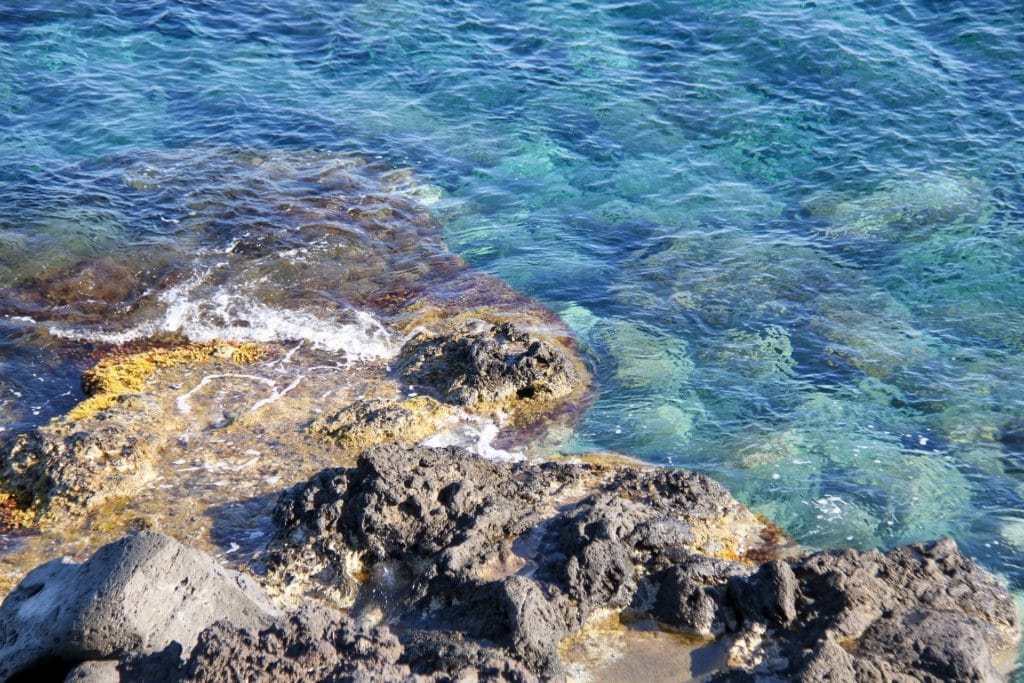Oxfordshire Mind’s Physical Activity Team are offering a weekly ‘virtual walk’ this week the team are exploring the Greek island of Santorini.
Kalimera, everyone. Welcome to Santorini, one of the most beautiful and unique of all the Greek islands. It’s famous everywhere for its dramatic coastline, rugged cliffs, and picturesque blue and white houses overlooking the Aegean sea.
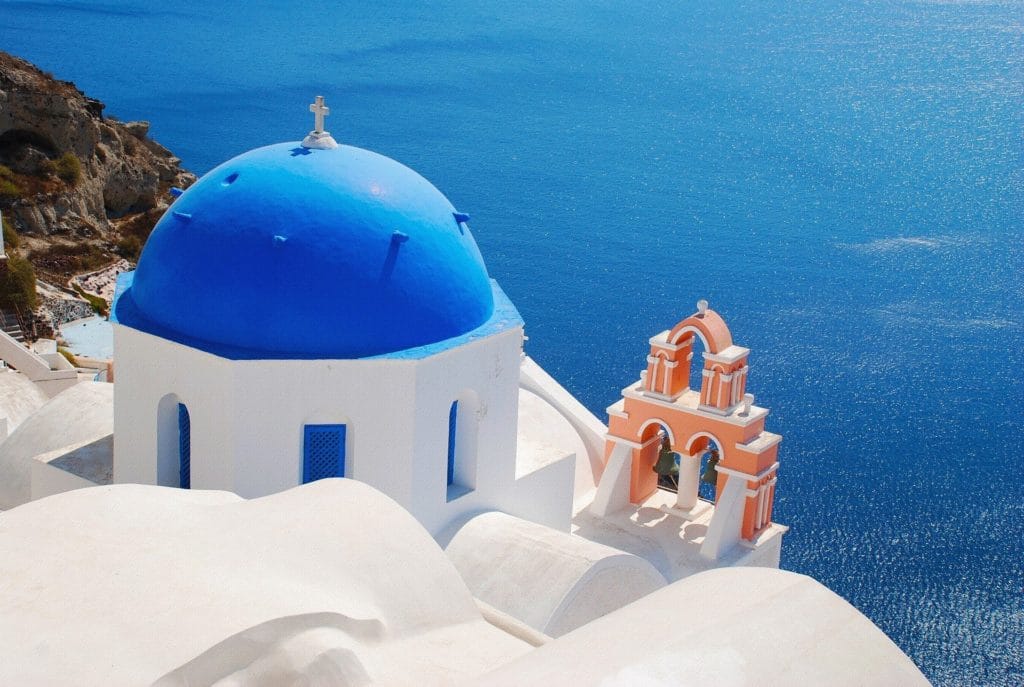
Santorini is in fact a giant volcanic caldera, filled in by the sea, as you will have seen as you sailed in on the ferry this morning. The volcanic cliffs would have surrounded you on all sides in an almost perfect circle, so that from the sky you imagine it would look like a giant eye, with its ring of jagged black rocks and its centre of sparkling blue.
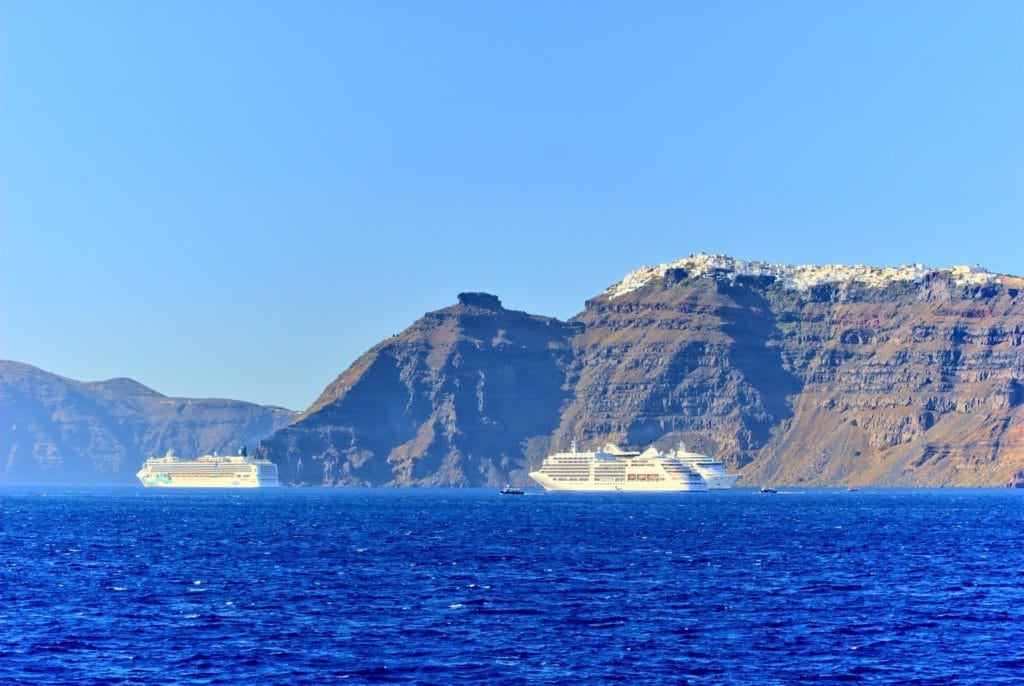
Thousands of years ago, that volcano exploded in one of the largest volcanic events in recorded history, covering the sky in ash, and sending tsunamis the size of skyscrapers to swamp the shores of nearby Crete. At the time these islands were home to a people known as the Minoans, who had developed a written language, rich artistic culture, and even indoor plumbing. Many people think this eruption was what caused that civilisation’s collapse. That’s probably where the legend of Atlantis comes from, and the idea of a highly advanced civilisation disappearing under the waves has exerted a powerful pull on the minds of artists and writers ever since.
Today, though, the volcano is dormant, and the island gives no hint of its turbulent past. Even the sea is peaceful, as calm and smooth as a millpond in the shelter of its crater. We get some breathtaking views of it as we wobble along the clifftop roads in the bus from the main town of Thera to the village of Oia on the northern tip of the island.
What is it about the sea around the Greek islands that makes you unable to tear your eyes away from it? The ancient Greek poet Homer called the Aegean Sea ‘wine-dark’, by which I think he meant that the water is so deep a blue that it’s almost purple, like how some people’s eyes are such an intense sapphire colour we call them violet. Or perhaps he meant that just looking at it is intoxicating; that something about the way the sunlight sparkles on the water, dazzling your eyes, goes to your head like wine.
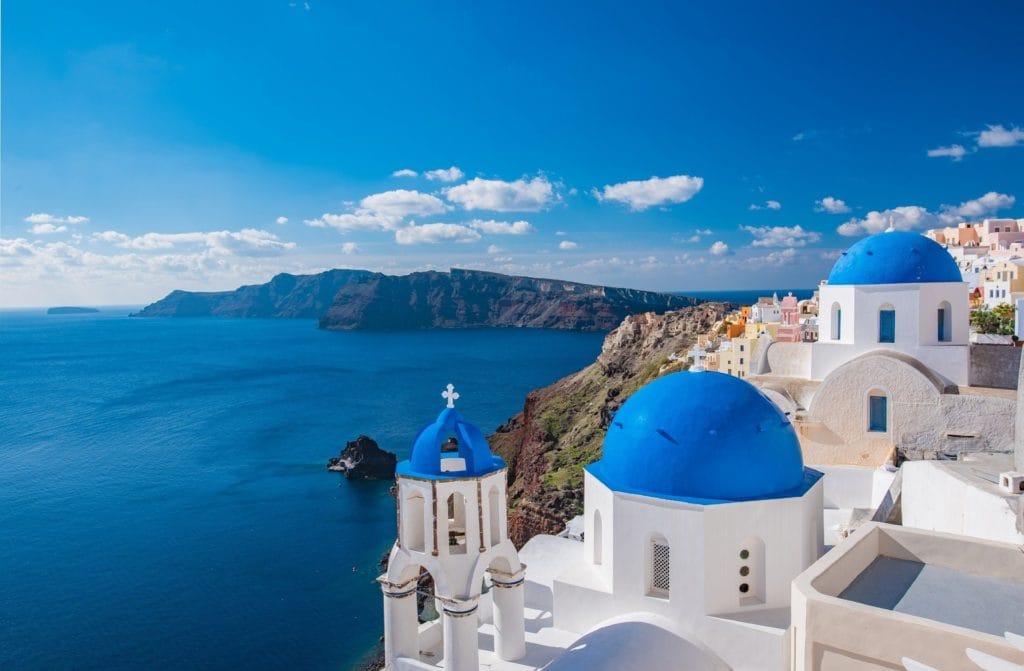
Finally the bus rumbles to a halt and we find ourselves at our destination. The village of Oia is a cluster of white walls perching precipitously on the cliff’s edge, like some strange colony of seabirds had landed here to roost. It’s the classic scene you think of when you think of when you think of a Greek island; whitewashed houses, stacked one on top of each other like a child’s lego set, punctuated by the occasional blue dome or spray of hot pink bougainvillea flowers. This view has been replicated on a thousand picture postcards, and yet somehow it never loses its charm. Oia is also famous for its windmills, which you can just see poking out at the top of the hillside there, turning gently in the breeze.
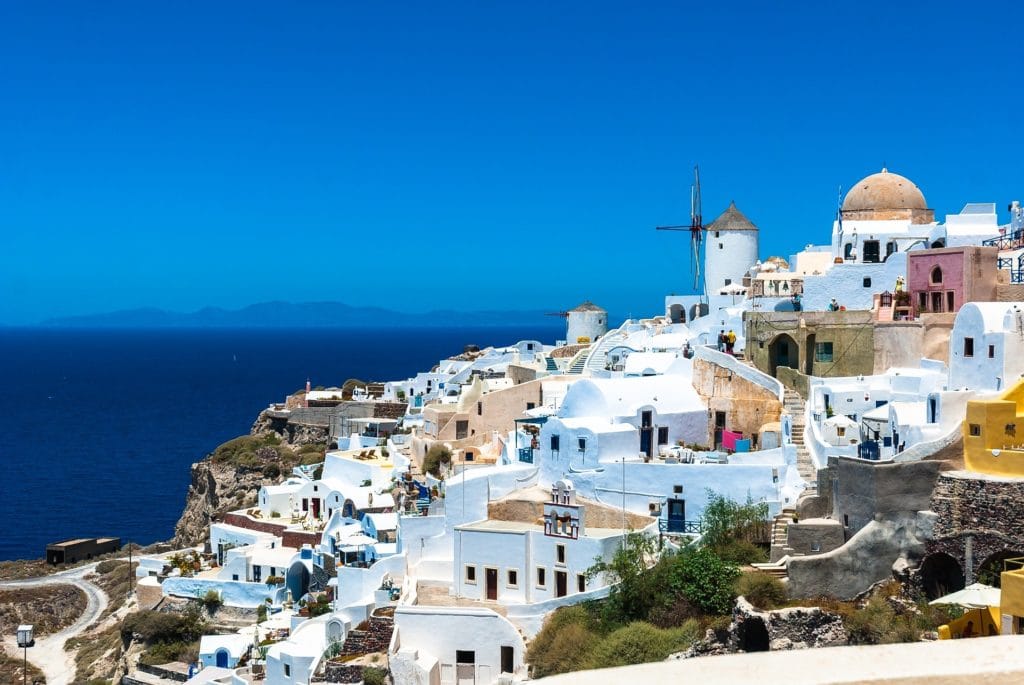
We wonder through the narrow streets, encountering churches, tavernas and pretty little shops selling postcards and fridge magnets and jewellery. Occasionally we run into other tourists – some of them with the glowing, sunkissed look that says they’ve been here a while, others like us with the wondering expressions of people who have just stepped off the boat or plane. All of them smile and nod at us as we pass. Finally we come out on the ruins of the Byzantine castle, a panorama point where we can stop to admire the deep blue of the sea and the sky spreading out in all directions in front of us.
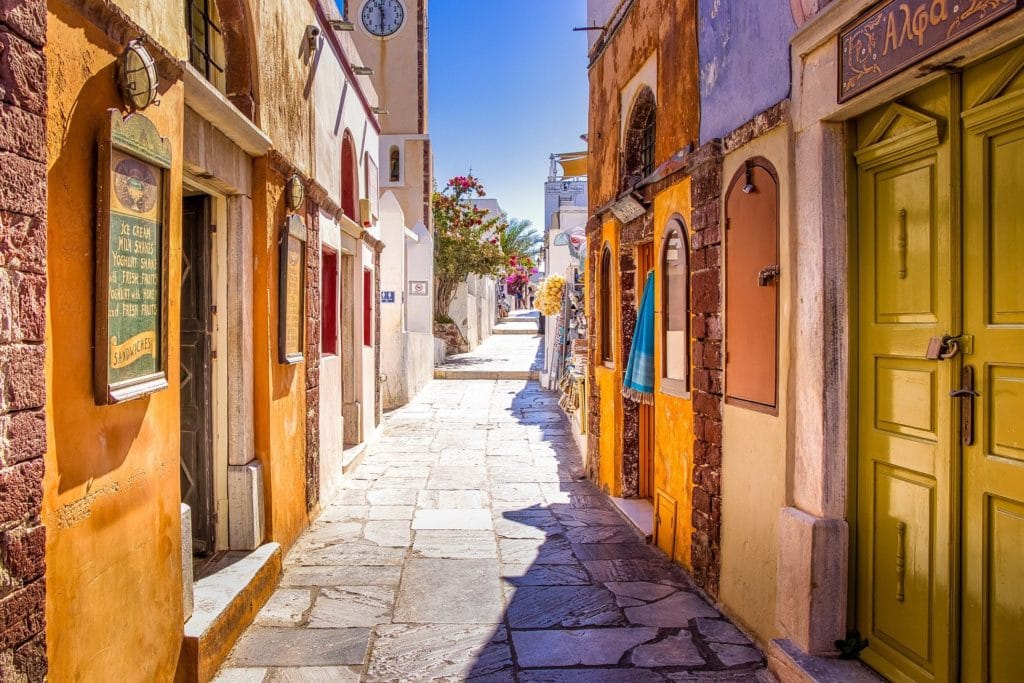
A winding path leads away from this point, zigzagging down the slope to the little seaside port at the foot of the cliffs. It’s a pleasant stroll. A faintly fruity scent comes to us on the breeze from the vegetation that clings to the rocks- oleander, perhaps, or some sort of herb? The cliffs here are actually bright red, another legacy of the island’s volcanic past, and you can imagine that at sunset the whole thing must light up with a sudden blaze of fiery colour, like embers when you blow on them, or like cooling magma as it trickles down a slope.
Several little boats are bobbing gently up and down in the bay as we enter the port of Ammoudi. It’s a perfect crystalline cove, with dozens of quaint little tavernas lining the waterfront. People are sitting out on the wooden chairs, having a leisurely lunch, and we get a glimpse of what they’re eating as we walk past – roasted vegetables dripping with olive oil, baked cheese that crumbles on your tongue, fresh calamari straight from the sea. It all smells so good. We’ll definitely have to come back here later on. But there’s somewhere we have to go first. How would you feel about finishing our walk with a little visit to the beach?
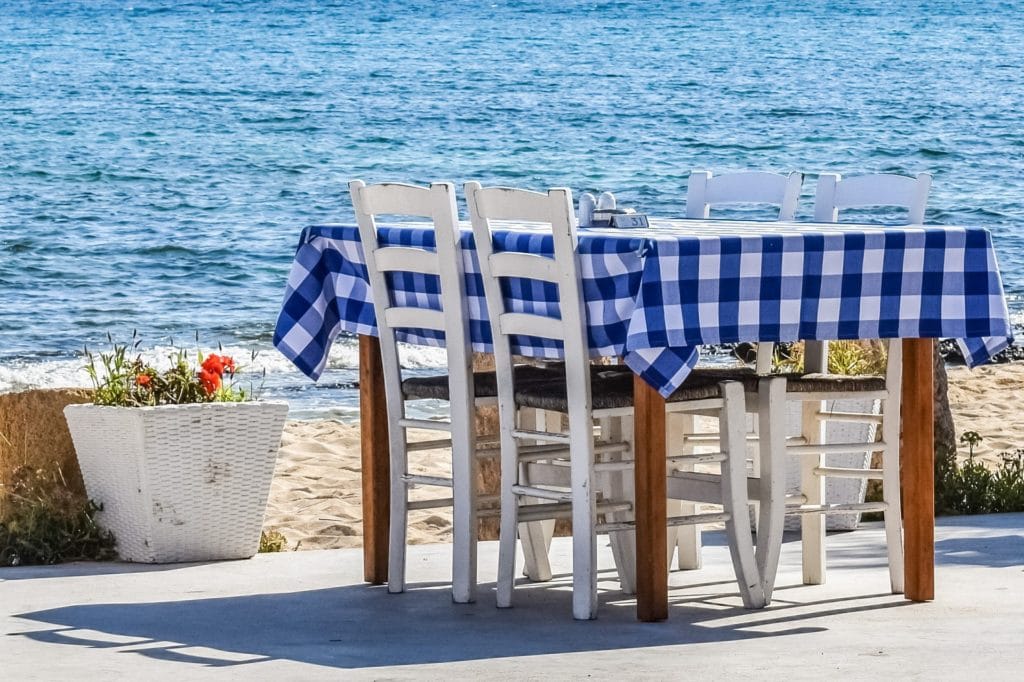
Let’s keep on following the coast road out of Ammoudi, through a few more houses, and over some rocks until we come out on a stretch of sand the same black colour as the cliffs above our head. This is called Katharos beach, and what luck! we have it all to ourselves. Take your sandals off and feel the softness of the sand against your feet. Let it trickle between your toes. Then let’s walk down to the water’s edge to paddle our feet in the cool, clear water. You might want to close your eyes for a moment, here, and take a deep breath, enjoying the warmth of the sunlight and the slight tickle of the gentle breeze on your face. You can hear the sigh of the waves as they wash back and forth, back and forth, against the shore.
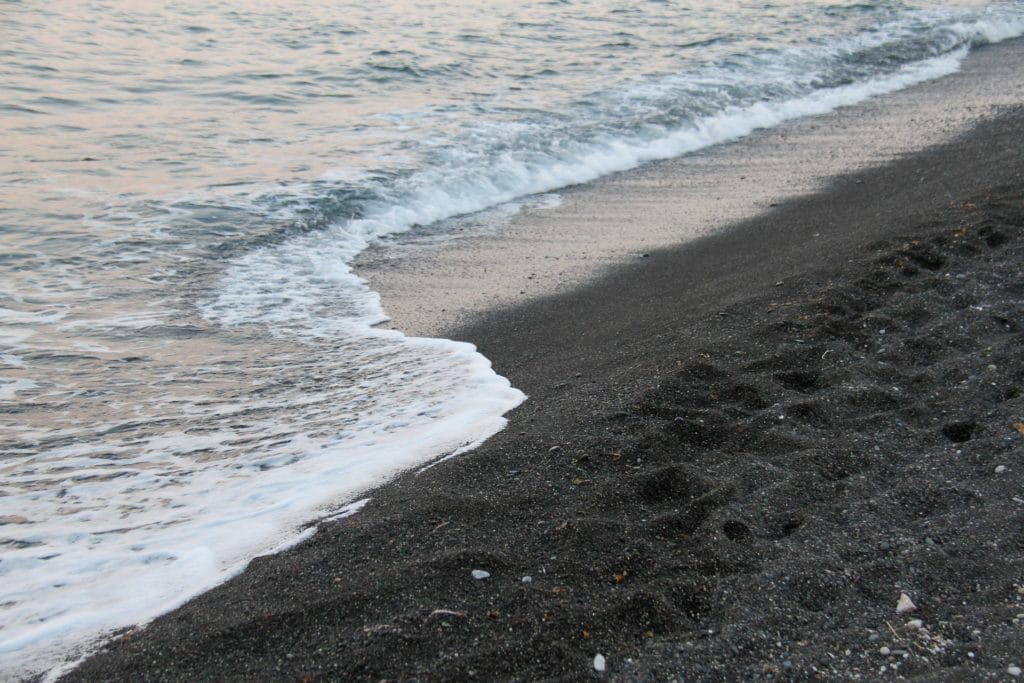
There’s no rush- you can spend as long as you like here. There are hours of peace and tranquility to be found in simply walking up and down the shoreline with your feet in the sea, or getting out a towel and lying down on the sand. I’ll leave you to it . See you back at Ammoudi for a late lunch- or an early dinner, depending on what time you manage to tear yourself away. Enjoy yourself , and I’ll also see next week for another walk!
